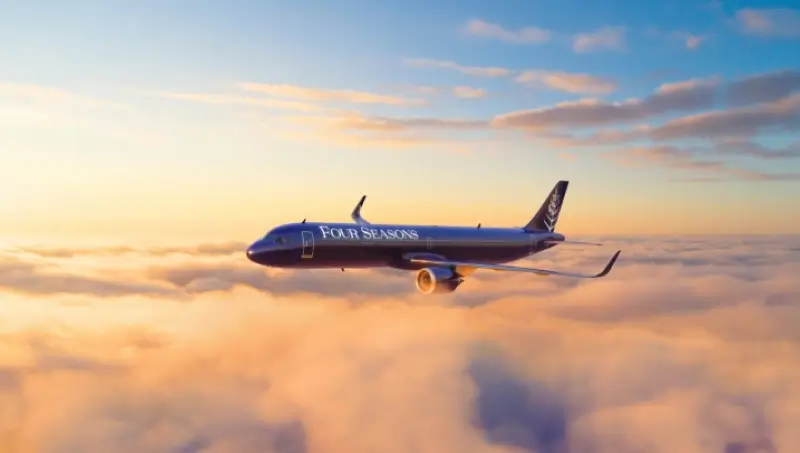
Peering into tomorrow's jet airliner
Aug 23, 2015

The future of jet airliners promises a blend of advanced technology and sustainability, transforming the way we travel. Enhanced aerodynamics and lightweight materials are set to improve fuel efficiency, while hybrid and electric propulsion systems aim to reduce carbon emissions significantly. Inside the cabin, passengers can expect smart seating that adapts to individual comfort needs and immersive entertainment systems that utilize augmented reality. Innovations in air traffic management will allow for more efficient routes, minimizing delays. As we peer into tomorrow’s jet airliner, a seamless, eco-friendly travel experience emerges on the horizon, reshaping global connectivity.
Innovations in Jet Airliner Design
The future of aviation is set to be transformed by groundbreaking innovations in jet airliner design. With advancements in technology, materials, and aerodynamics, the next generation of aircraft promises to be more efficient, environmentally friendly, and passenger-friendly.
Key Technologies Shaping Tomorrow's Jet Airliners
Several key technologies are expected to play a pivotal role in the evolution of jet airliners. These include:
- Electric Propulsion Systems: The integration of electric engines and hybrid systems aims to reduce emissions and fuel consumption.
- Advanced Materials: Lightweight materials such as carbon-fiber composites will enhance fuel efficiency and reduce maintenance costs.
- Autonomous Systems: Automation in piloting and air traffic management can increase safety and efficiency in operations.
Environmental Considerations in Future Aircraft
As the aviation industry faces increasing pressure to reduce its carbon footprint, future jet airliners will be designed with sustainability in mind. Key aspects to consider include:
| Aspect | Current Challenges | Future Solutions |
|---|---|---|
| Fuel Efficiency | High fuel consumption | Utilization of sustainable aviation fuels (SAFs) |
| Noise Pollution | High noise levels during takeoff and landing | Quieter engines and improved aerodynamics |
| Carbon Emissions | Significant greenhouse gas emissions | Transition to electric and hybrid propulsion |
Passenger Experience: A New Era
Improving the passenger experience is a major focus for future jet airliners. Innovations that enhance comfort and convenience include:
- Smart Cabins: Integration of IoT devices for personalized climate control and entertainment options.
- Enhanced Connectivity: High-speed internet access and in-flight entertainment systems that cater to individual preferences.
- Ergonomic Seating: Designs that prioritize passenger comfort and wellbeing during long flights.
Charting the Path to the Future
To visualize the trajectory of jet airliner innovations, consider the following chart that outlines the expected advancements over the next two decades:
| Year | Expected Advancements |
|---|---|
| 2025 | Introduction of hybrid aircraft models |
| 2030 | Widespread use of sustainable aviation fuels |
| 2035 | Launch of fully electric commercial airliners |
| 2040 | Implementation of fully autonomous flight systems |
The Role of Collaboration in Advancements
The future of jet airliners will not be achieved in isolation. Collaboration among aerospace manufacturers, airlines, and regulatory bodies is crucial. Key areas of focus include:
- Research and Development: Joint ventures to foster innovation in aircraft design and technology.
- Regulatory Frameworks: Establishing guidelines that support the introduction of new technologies while ensuring safety.
- Industry Standards: Developing standard practices for the use of sustainable fuels and materials.
Challenges Ahead
Despite the promising advancements, the aviation industry faces several challenges that could impede progress:
- High Development Costs: The financial burden of developing new technologies can be significant.
- Public Acceptance: Gaining passenger trust in new technologies and safety measures is essential.
- Infrastructure Needs: Upgrading existing airport facilities to accommodate new aircraft types and technologies.
Conclusion: The Horizon of Jet Airliners
As we peer into tomorrow's jet airliners, it is clear that the industry is on the brink of a transformation driven by technological advancements and a commitment to sustainability. By addressing current challenges and embracing innovation, the aviation sector can ensure a bright future that benefits both the environment and passengers alike.
```Related Articles

Explore Thailand: The Best Islands to Visit for Paradise, Adventure, and Relaxation

The Ultimate Guide to the Best Islands in Thailand for Your Next Getaway

Do babies need passports? How to get a passport for a newborn

How to get a U.S. passport fast: here’s how to expedite the process

What is Mobile Passport Control: 5 reasons why you should use it

SENTRI vs. Global Entry: A detailed guide

Do you need a passport to go to the Bahamas? Let’s find out

Do you need a passport to go to Mexico? A detailed guide

Do you need a passport to go to Canada? We got the answer

Do You Need a Passport for a Cruise: An Essential Travel Guide

Booster Seat Requirements: All the Rules to Follow in Your Rental Car

What Are the World’s Most Powerful Passports, and How Does Yours Rank?

How to Take a Passport Photo at Home: A Helpful Guide

You've got to have heart! Southwest's new livery

Your opinion: Should water be free on low cost carriers?

Young women bolder than guys as solo travellers
